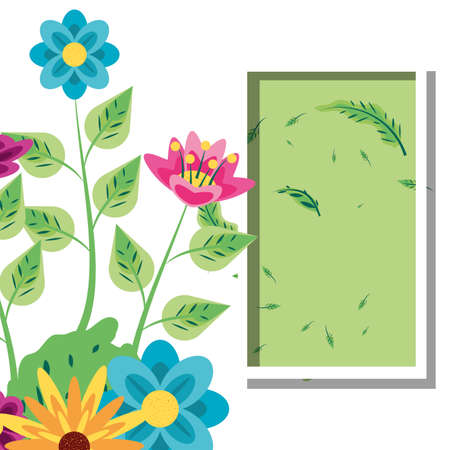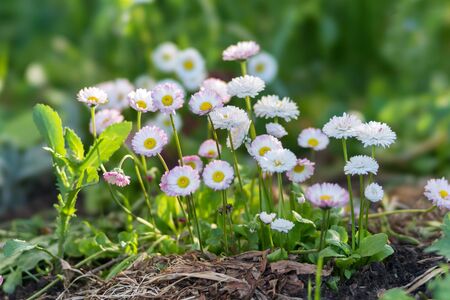Introduction to British Wildflower Meadows
Traditional British wildflower meadows hold a cherished place in the nation’s landscape, celebrated for their vibrant beauty, rich history, and vital role in supporting native wildlife. Once a common sight across the UK countryside, these meadows are now increasingly rare, making their recreation in gardens both culturally significant and ecologically valuable. A classic British wildflower meadow is more than just an attractive swathe of blooms; it represents centuries of agricultural heritage and local biodiversity. By establishing a wildflower meadow in your garden, you help preserve threatened species, provide essential habitats for pollinators, and connect with an iconic element of Britain’s natural heritage. Beyond their ecological importance, wildflower meadows offer visual delight throughout the seasons—delivering changing palettes of colour, texture, and form that enhance any outdoor space. Whether your garden is urban or rural, large or small, cultivating a traditional wildflower meadow can bring a touch of countryside charm and a sense of stewardship for the land into your everyday life.
2. Choosing the Right Location and Preparing Your Site
Before sowing a single seed, selecting the ideal spot is crucial for establishing a classic British wildflower meadow. Wildflowers generally thrive in areas with full sun, so aim for a location that receives at least six hours of direct sunlight daily. While partial shade can work for some species, an open, sunny aspect remains preferable for the widest variety of native blooms.
Assessing Soil and Drainage
Traditional British wildflowers prefer poor, low-fertility soils; rich, nutrient-dense earth tends to favour aggressive grasses and weeds over delicate meadow species. Test your soil type first—sandy or loamy soils are best. Heavier clay can be improved by adding horticultural grit or organic matter to aid drainage.
| Soil Type | Suitability for Meadows | Recommended Action |
|---|---|---|
| Sandy/Loamy | Ideal | Minimal intervention needed |
| Clay | Challenging | Add grit/organic matter to improve drainage |
| Nutrient-rich | Poor | Remove topsoil or sow yellow rattle to reduce fertility over time |
Site Preparation Steps: A British Garden Approach
- Clear the Area: Remove any turf, perennial weeds (like dandelions and nettles), and debris. For larger patches, lifting the turf with a spade and composting it is both traditional and eco-friendly.
- Reduce Fertility: If your site is lush or has been treated with fertiliser, consider stripping away the top 5-10 cm of soil to lower fertility. This mimics the lean conditions where wildflowers outcompete grasses.
- Till Lightly: Break up compacted soil with a fork or rotavator, but avoid deep digging which can bring weed seeds to the surface.
- Rake Level: Use a garden rake to produce a fine tilth—crumbly on top but firm underneath. This helps ensure good seed-to-soil contact when you sow later on.
- Let It Settle: Leave the prepared ground for two weeks, allowing any remaining weed seeds to germinate. Remove these seedlings before sowing your wildflower mix.
A Note on Typical British Gardens
If space is limited—as is common in many UK homes—consider transforming a section of lawn or an unused border rather than starting from scratch in an open field. With careful preparation, even small urban gardens can support a thriving patch of native wildflowers.

3. Selecting Authentic British Wildflowers
When creating a traditional British wildflower meadow, the choice of wildflowers is critical to ensuring both regional authenticity and the promotion of local biodiversity. It’s important to select species that are native to the UK, as these plants have evolved alongside local wildlife and thrive in British soil and climate conditions. Classic choices for meadows include oxeye daisy (Leucanthemum vulgare), common knapweed (Centaurea nigra), meadow buttercup (Ranunculus acris), red clover (Trifolium pratense), and yellow rattle (Rhinanthus minor).
Sourcing Native Seeds and Plugs Responsibly
The provenance of your seeds or plugs is just as important as the species you choose. To maintain ecological integrity and avoid introducing non-native varieties, always source your wildflower seeds from reputable British suppliers who specialise in native stock. Look for organisations or nurseries that provide detailed information on seed origin—ideally specifying regional provenance, which helps sustain local genetic diversity.
Tips for Choosing the Right Supplier
- Seek out members of the Flora Locale or suppliers registered with the RHS (Royal Horticultural Society).
- Avoid generic ‘wildflower mixes’ that may contain imported or inappropriate species.
- If possible, opt for seed mixes tailored to your specific region or soil type—suppliers such as Emorsgate Seeds and Scotia Seeds offer helpful regional advice.
Focusing on Biodiversity and Long-Term Success
Diversity is key: incorporate a mix of annuals and perennials to ensure continuous flowering throughout the season, supporting pollinators like bees, butterflies, and other beneficial insects. Avoid invasive species—even some that are attractive—since they can outcompete native flora and disrupt local ecosystems. By taking care at this stage, you lay a solid foundation for a resilient, truly British wildflower meadow that will flourish for years to come.
4. Sowing and Establishing Your Meadow
Once your site is prepared, sowing wildflower seeds or planting plugs is the critical next step to establishing a traditional British wildflower meadow. Timing, technique, and choosing between seed or plug are all important considerations for success in our varied British climate.
When to Sow or Plant
| Method | Best Time (UK) | Notes |
|---|---|---|
| Wildflower Seeds | March–May or August–October | Late summer/autumn sowings often yield stronger growth due to natural stratification over winter. Spring sowings suit lighter soils prone to waterlogging in winter. |
| Wildflower Plugs | September–November or March–April | Plant when soil is moist but not frozen. Autumn planting allows roots to establish before dry spells. |
How to Sow Wildflower Seeds
- Prepare the Soil: Ensure the ground is weed-free, finely raked, and firmed but not compacted. Avoid adding fertiliser; wildflowers thrive on low-nutrient soils.
- Mix Seeds with Dry Sand: Combine your wildflower seeds with dry sand at a 1:4 ratio. This helps you distribute the seeds evenly and see where you have sown.
- Sow Evenly: Scatter the mixture by hand, walking in two directions across the site for even coverage.
- Tamp Down: Lightly press seeds into the soil using a roller or by walking gently over the area. Do not bury seeds deeply; they need light to germinate.
- Water if Dry: Only water if conditions are unusually dry; natural rainfall is usually sufficient in Britain.
How to Plant Wildflower Plugs
- Create Holes: Use a dibber or trowel to make holes about 15cm apart, deep enough for each plug’s root system.
- Insert Plugs: Place each plug into its hole so that the top of the plug is level with the soil surface.
- Firm In: Gently press soil around each plug to eliminate air pockets and secure the plant.
- Water Well: Water thoroughly after planting and keep moist during dry periods for the first few weeks.
Pointers for British Conditions
- Avoid Fertile Soils: If your soil is too rich, consider removing topsoil or mixing in sharp sand/gravel to lower fertility.
- Sow Thinly: Less is more—over-seeding can lead to overcrowding and favour grasses over flowers.
- Pest Watch: Protect young seedlings from slugs and birds using netting or organic deterrents if necessary.
- Pace Yourself: Meadows take time; don’t expect instant results in year one. Allow nature to take its course as species gradually establish and self-seed.
The initial establishment phase sets the tone for years to come. With care and patience, your garden will soon echo with colour and life characteristic of a truly traditional British wildflower meadow.
5. Caring for Your Meadow Through the Seasons
Once your wildflower meadow is established, ongoing care is essential to maintain its health and traditional British character. The rhythm of maintenance follows the natural cycle of the British year and echoes time-honoured land management practices.
Mowing: Timing and Technique
Mowing is crucial for mimicking traditional hay meadows and keeping vigorous grasses in check. In most British gardens, you should allow your meadow to grow unchecked from early spring until mid to late July. After this, perform a single annual cut—often known as the “hay cut”—once most flowers have set seed. Use a strimmer or scythe for small areas or a mower set to its highest setting for larger patches. Leave the cuttings to dry for a few days so seeds can drop back into the soil, then remove them to prevent nutrient build-up.
Weeding: Keeping Balance
Regular weeding helps prevent invasive species such as docks, nettles, or brambles from dominating. Inspect your meadow every couple of months, particularly in early spring and autumn, and hand-pull unwanted plants before they go to seed. This selective approach supports native wildflowers without disturbing established plant communities.
Supporting Wildlife Year-Round
A traditional wildflower meadow provides a vital refuge for British wildlife. Avoid using pesticides and herbicides, as these disrupt beneficial insect populations. Consider leaving some areas uncut over winter to offer shelter for overwintering insects and birds. If possible, create small log piles or leave stones at the edge of your meadow to provide habitat for hedgehogs and amphibians.
Adapting Care to the British Climate
The UK’s variable weather means flexibility is key. In wet summers, you may need to delay mowing until the ground firms up; during droughts, resist watering established meadows—wildflowers are adapted to cope with lean conditions. Always walk your meadow before mowing to rescue any hidden wildlife.
Traditional Touches
If you want to echo classic British meadow management, consider light autumn or winter grazing with sheep after the hay cut. This keeps sward height low and encourages a greater diversity of plants—a method practised for centuries across Britain’s countryside.
Caring for your meadow in tune with local seasons will ensure it thrives for years while supporting the biodiversity that makes British wildflower meadows so beloved.
6. Encouraging Wildlife and Enjoying Your Meadow
One of the greatest rewards of creating a traditional British wildflower meadow is witnessing a surge in local wildlife, from bees and butterflies to birds and hedgehogs. To make your meadow as welcoming as possible for pollinators, consider planting nectar-rich species such as knapweed, oxeye daisy, and bird’s-foot trefoil. These native flowers provide essential food sources throughout the season. You might also leave small piles of logs or stones at the edge of your meadow to create habitats for insects and amphibians.
Suggestions for Attracting Pollinators and Local Wildlife
To further encourage pollinators, avoid using pesticides and allow some patches of grass to remain uncut until late summer. Planting a mix of early, mid, and late-blooming wildflowers ensures that bees, butterflies, and hoverflies have a continuous food supply. If space allows, incorporate a small pond or water feature nearby—this can attract dragonflies, newts, and birds seeking refreshment.
Ideas for Making the Most of Your Meadow
Your wildflower meadow isn’t just for wildlife—it can become a cherished feature of your garden. Consider adding a simple mown path through the meadow to invite leisurely strolls or set up a rustic bench at its edge for quiet observation. In late summer, you might hold a family picnic among the blooms or use the space for sketching and photography sessions. Let the area evolve naturally; each year will bring subtle changes in colour and species mix.
Integrating with Classic UK Garden Features
A wildflower meadow works beautifully alongside other traditional British garden elements. For instance, plant native hedgerows—such as hawthorn or hazel—along the boundary to create shelter for birds and small mammals. Old stone walls or woven willow fencing can help define the area while enhancing its classic character. Finally, allow self-seeded foxgloves or primroses to spill into more formal borders, blurring the line between structured beds and wilder spaces in true cottage garden fashion.
By thoughtfully encouraging wildlife and making your meadow an integral part of your garden design, you’ll be rewarded with a living tapestry that delights both people and nature—an authentic slice of British countryside right outside your door.


